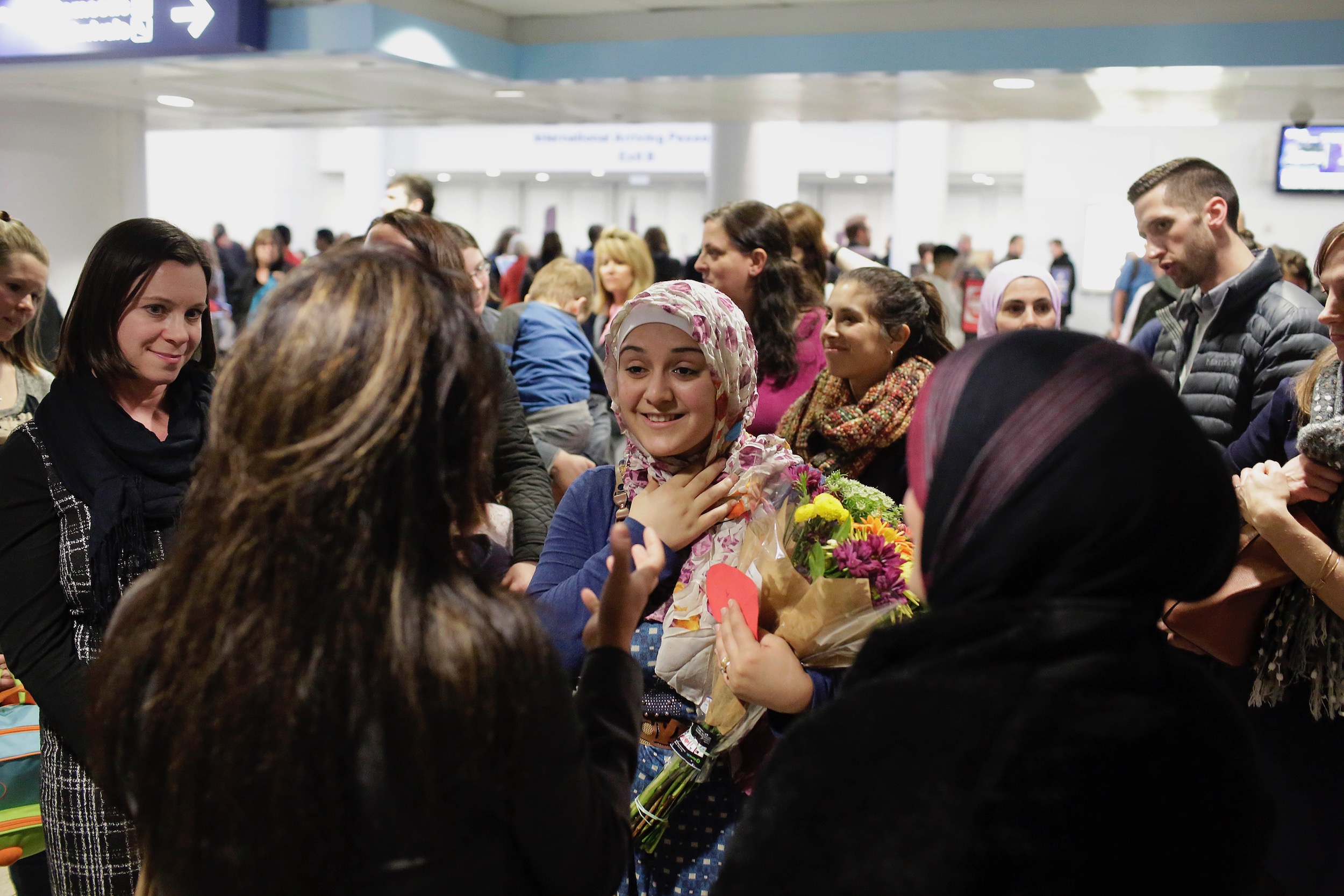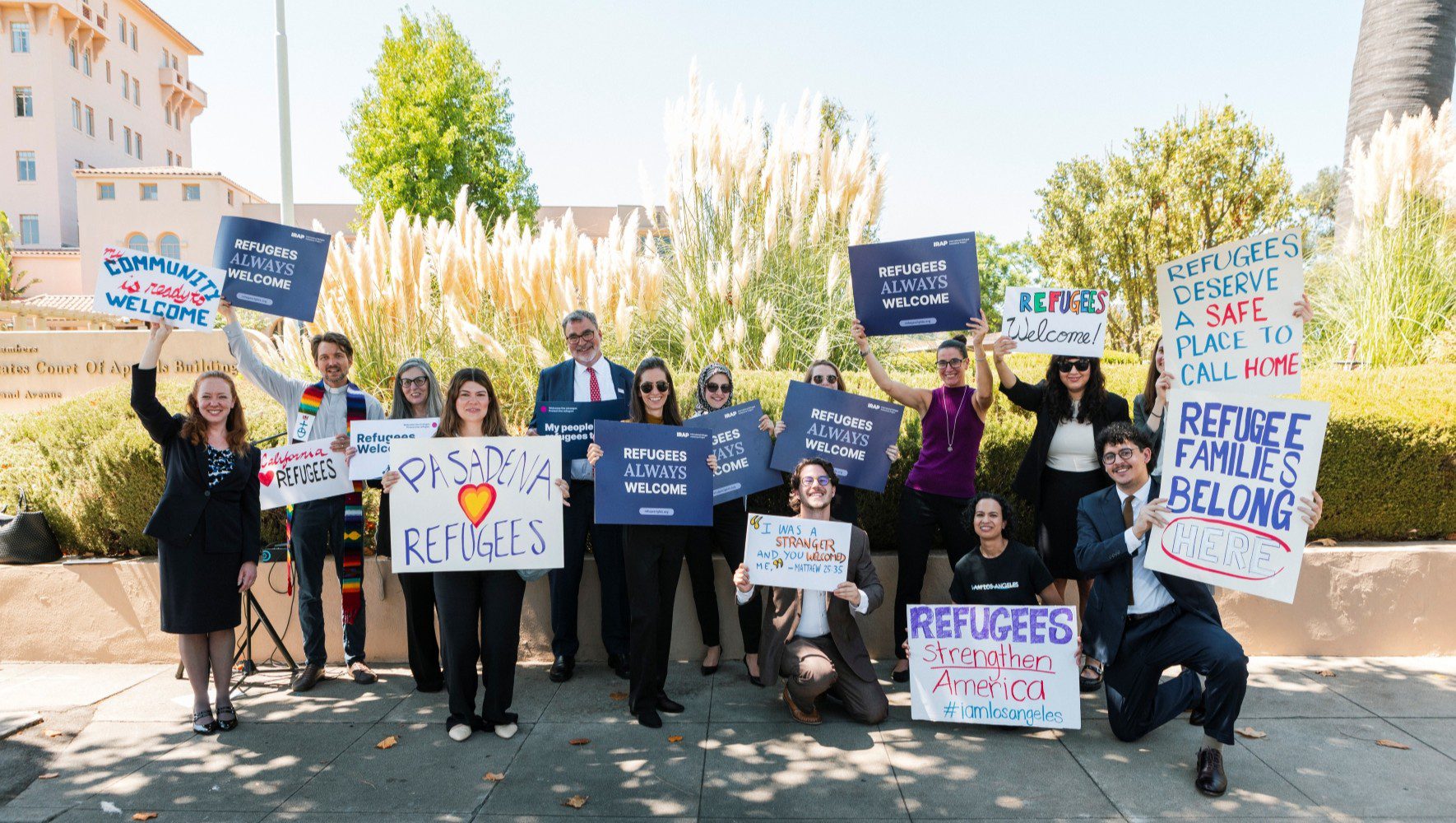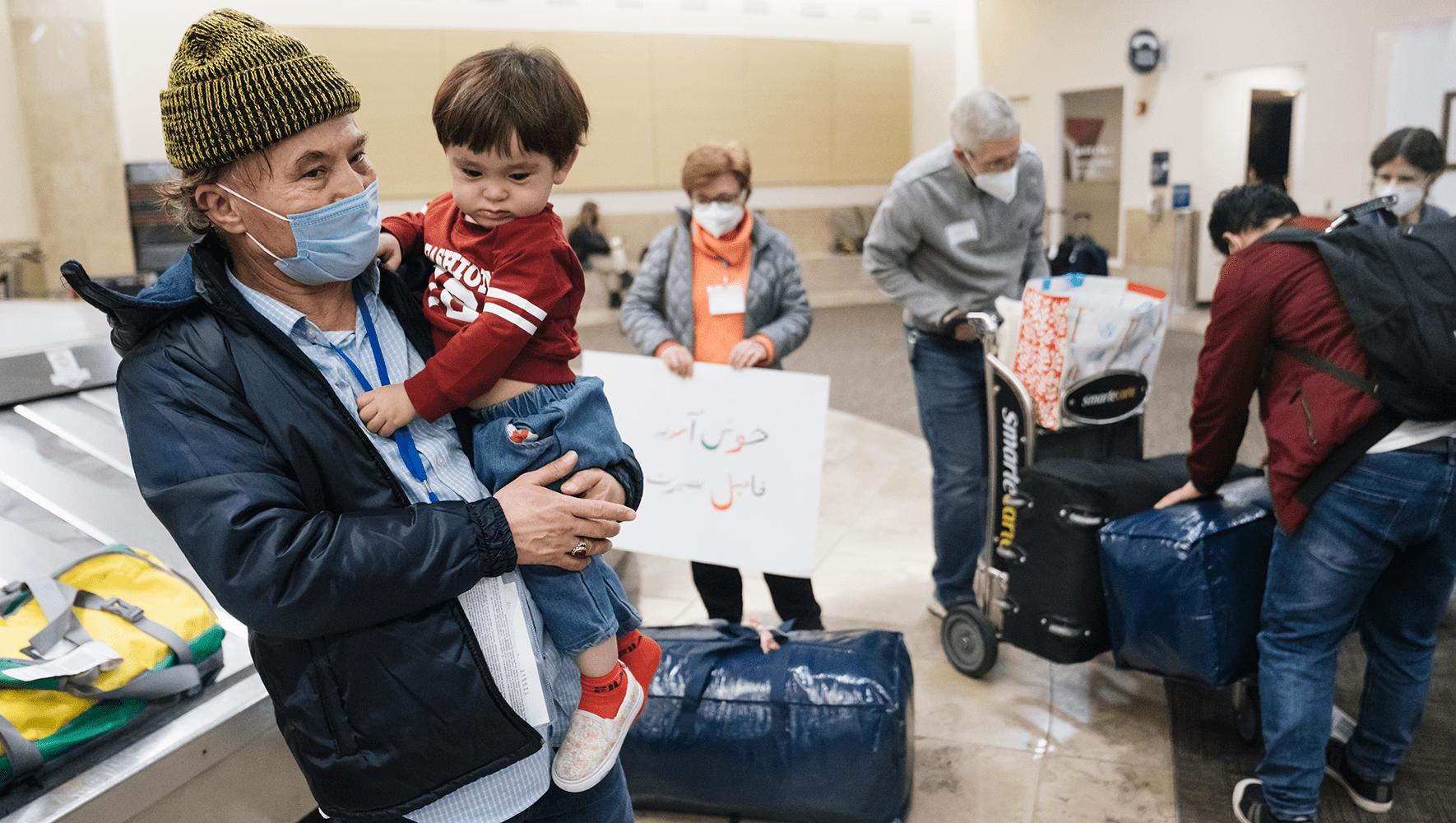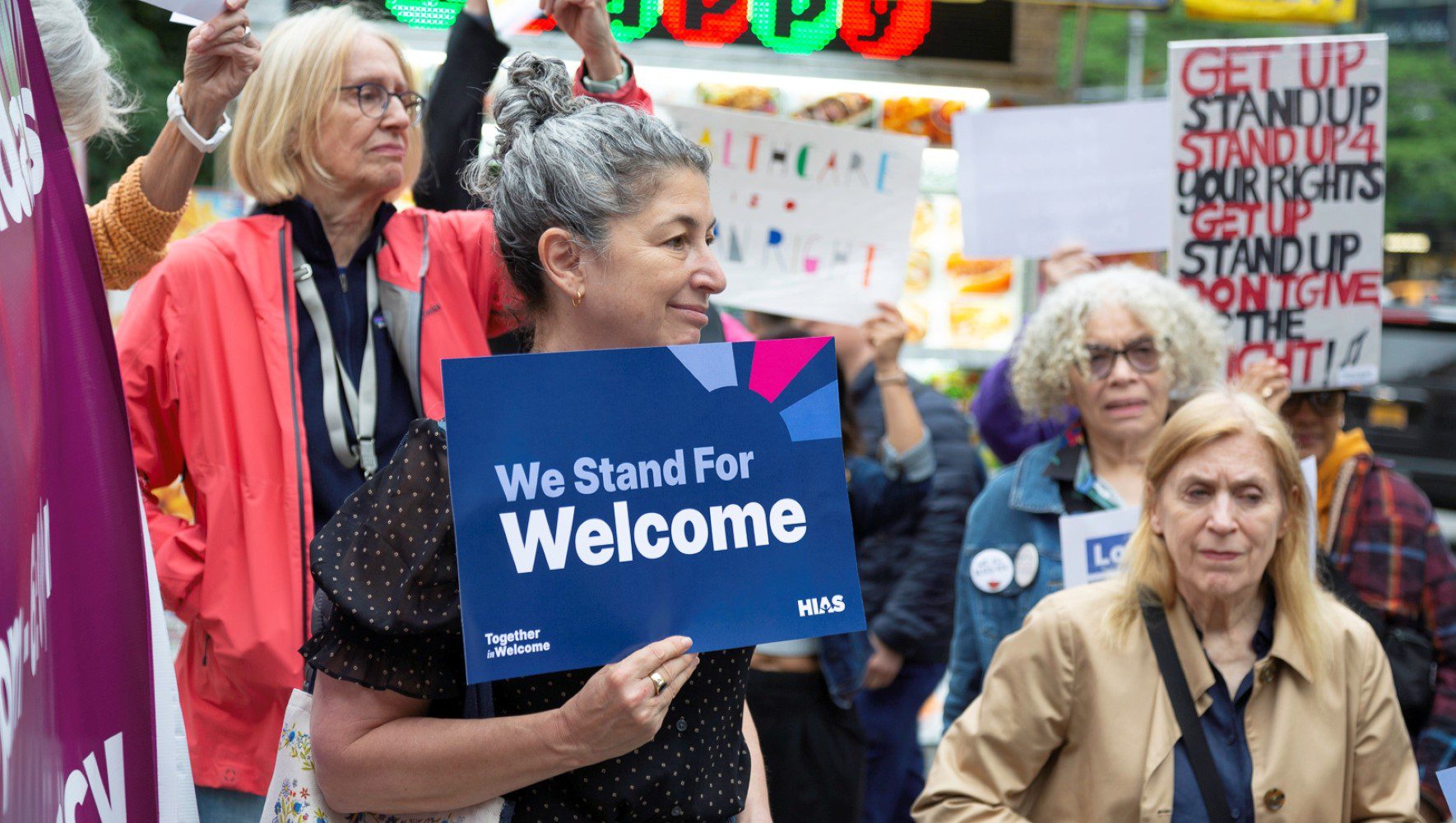Across America, Refugee Resettlement Ramps Back Up
By Max J. Rosenthal, HIAS.org
Aug 05, 2021

Syrian refugee Baraa Haj Khalaf holds a bouquet of flowers as she greets people during her arrival at O'Hare International Airport in Chicago on Feb. 7, 2017.
(Joshua Lott/AFP via Getty Images)
For the first time in four years, refugee resettlement agencies across the United States are getting busy.
Under the Trump administration, which repeatedly slashed the number of refugees who could resettle in the U.S., many resettlement groups were forced into survival mode. But with the Biden administration raising the annual cap on U.S. refugee admissions and promising to boost it even higher in 2022, these same groups are now feverishly working to rebuild their operations and prepare for a future that looks much brighter for refugees in America.
“We're all very excited, but there's work to be done,” said Sylvia Acevedo, the senior director of refugee and employment services at Gulf Coast Jewish Family and Community Services in Clearwater, Florida.
Gulf Coast JFCS is one of HIAS’ 15 local affiliates across the country. These groups do the on-the-ground work of helping refugees settle into their lives in the U.S., doing everything from welcoming newcomers at the airport to providing food, jobs, and help applying for government programs while they get on their feet.
Providing these services requires a wide network of people and resources, with a surprising breadth of scope. The groups need volunteers willing to drive refugees to a variety of destinations including doctor’s appointments, government offices, or even the supermarket. And, among the other specialized tasks, resettlement groups need trained staff members to manage cases, people with the ability to find housing for newcomers, and employers who will hire refugees.
“It's not rocket science, but there are so many pieces,” said Etleva Bejko, the director of refugee and immigration services at HIAS affiliate Jewish Family Service of San Diego, about the complexity of welcoming refugees.
The task is especially tricky because, in many cases, those networks shrank over the course of the Trump administration. The dwindling number of refugees resettled in the United States meant far less federal funding for resettlement agencies. Some agencies closed, while others were forced to lay off experienced staff members. And in many cases, volunteer enthusiasm, which spiked at the start of Trump’s term, slowly faded as the refugee system slowly ground to a halt.
“There was a commitment to try to get through this, but that only goes so far if you're not resettling anyone,” said Becca Schwartz, the resettlement director at Jewish Social Services of Madison, Wisconsin.
Now the future for resettlement finally looks bright again. In May, the Biden administration boosted annual refugee admissions from an all-time low of 15,000 up to 62,500. That decision has proven largely symbolic: even after raising the cap, the U.S. has settled slightly more than 6,000 refugees this fiscal year, the lowest number in the history of the modern refugee program. The real improvement is expected during the 2022 fiscal year, when the White House says it will set the cap at 125,000. For resettlement groups, that will mean more arrivals and more State Department funding, but also plenty of new needs to fill.
Bejko, for instance, must now hire staff members who can speak a variety of new languages. For years, JFS San Diego mostly resettled refugees from Afghanistan and built up a staff proficient in Dari or Farsi. Now, she said, her organization expects a “more diverse” group of arrivals who may need assistance in French or languages from sub-Saharan Africa. For Gulf Coast JFCS, the main priority is finding housing so newly arrived refugees have places to live. “All of us are dedicated to finding housing, including our board chair,” Acevedo said.
Even renewed enthusiasm from volunteers and local communities can present challenges. Bejko said Biden’s decision to raise the refugee admissions cap sparked huge excitement among supporters, including the local Afghan community, Jewish organizations, and San Diego synagogues. But the administration is just beginning to rebuild the refugee admissions system, so resettlement agencies have to tamp down expectations among volunteers or former refugees hoping their own friends or family can soon join them.
“We’re getting calls everyday and people are excited and they cannot wait,” Bejko said. “Sometimes we have to explain that yes, things are going to get better, but you just have to be a little bit more patient.”
When refugees do arrive, agencies also have to balance their needs with the zeal of volunteers. Many refugees come to the United States after enduring danger and trauma, and it’s easy for untrained volunteers to accidentally say or do the wrong things for refugees’ mental health. “There’s a lot of enthusiasm, a lot of compassion, but sometimes it can be overwhelming for the client,” said Cathryn Miller-Wilson, the executive director of HIAS Pennsylvania.
Meanwhile, all of these agencies are also gearing up for the next fiscal year, which begins on Oct. 1. If the Biden administration fulfills its pledge to raise the refugee admissions cap to 125,000 — a level not seen in more than two decades — resettlement agencies will see their arrival numbers skyrocket. They all hope to be able to hire staff and raise funds before large increases start so that refugees can have all the services they need in place. "Having the opportunity to grow before the numbers arrive, it's very, very important,” Bejko said.
Despite the challenges, however, resettlement groups are eager to tackle the challenge and return to business as usual. “There's been just a little bit of fear about, ‘Oh my God, could we handle that kind of an increase?’” said Acevedo. “And I've reminded the staff that … we’ve done this before.”


